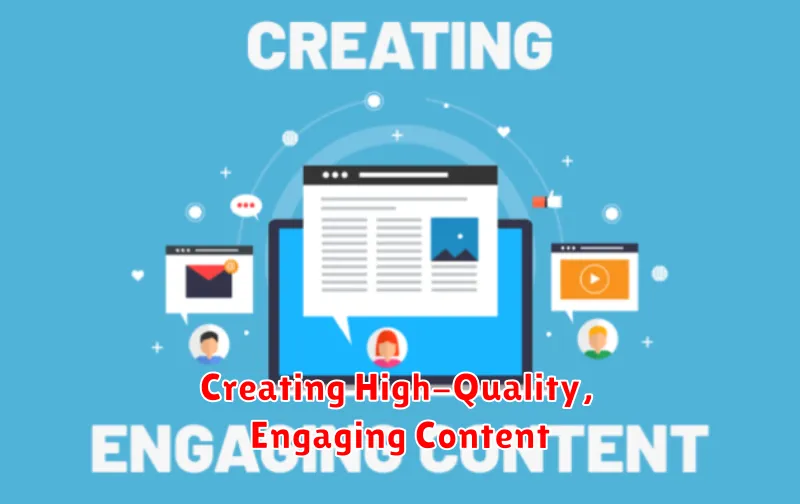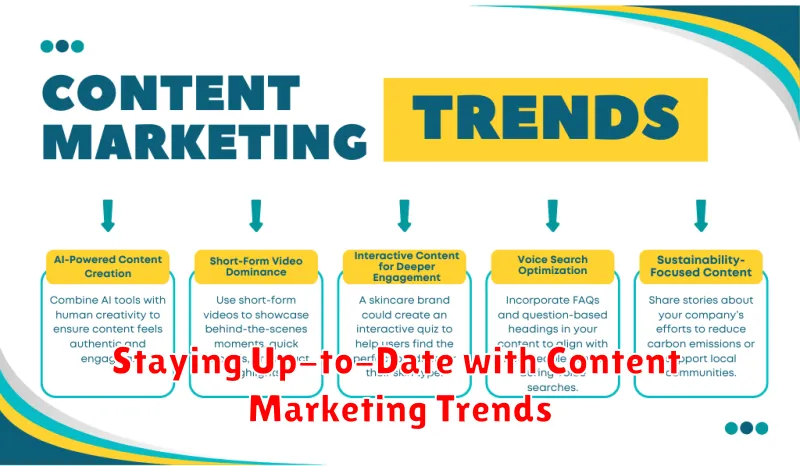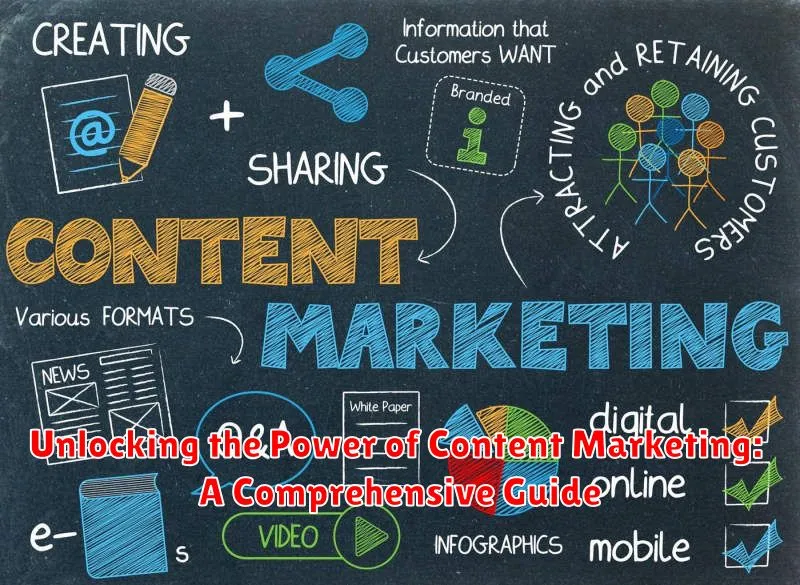In today’s digital landscape, content marketing reigns supreme. It’s no longer a supplementary tactic but a core strategy for businesses aiming to connect with their target audience, build brand loyalty, and drive measurable results. This comprehensive guide will delve into the power of content marketing, providing you with the knowledge and tools you need to harness its potential and achieve your marketing objectives. From understanding the fundamental principles to developing a robust content strategy and measuring its effectiveness, this guide will equip you with the insights to unlock the true power of content marketing.
Whether you’re a seasoned marketer looking to refine your approach or a newcomer eager to explore the possibilities, this guide will serve as your roadmap to content marketing success. We’ll explore various content formats, including blog posts, articles, videos, infographics, and social media updates, and how to strategically deploy them to maximize engagement and reach. Discover how to craft compelling content that resonates with your audience, optimize it for search engines, and distribute it effectively across multiple channels. Prepare to unlock the power of content marketing and transform your marketing efforts.
Understanding the Core Concepts of Content Marketing
Content marketing revolves around the creation and distribution of valuable, relevant, and consistent content to attract and retain a clearly defined audience — and, ultimately, to drive profitable customer action. It’s not about selling, but about providing genuine value that builds trust and establishes your brand as a credible resource.
This approach differs significantly from traditional advertising. Instead of interrupting consumers with promotional messages, content marketing seeks to engage them with informative and entertaining content that addresses their needs and interests. This can include blog posts, articles, videos, infographics, and more.
A key principle of content marketing is the focus on long-term relationship building. By consistently delivering high-quality content, you nurture your audience, fostering loyalty and driving organic growth over time. This approach emphasizes organic reach and engagement, as opposed to paid advertising, which often has a more immediate, but less sustainable, impact.
Defining Your Content Marketing Strategy
A well-defined content marketing strategy is crucial for achieving your marketing goals. This involves a clear understanding of your target audience, their needs, and where they consume content. Begin by conducting thorough audience research to create detailed buyer personas. These personas will guide your content creation efforts and ensure your message resonates with the right people.
Next, establish clear and measurable marketing objectives. What do you hope to achieve with your content marketing efforts? Whether it’s increased brand awareness, lead generation, or driving sales, defining your objectives will provide direction and focus.
Finally, determine the key performance indicators (KPIs) you’ll use to track your progress and measure the success of your content marketing strategy. These KPIs should align with your overall business objectives and provide actionable insights.
Creating High-Quality, Engaging Content

Creating compelling content is the cornerstone of a successful content marketing strategy. Quality over quantity should be your guiding principle. Focus on providing genuine value to your target audience through informative, entertaining, or inspiring content.
Understanding your audience is crucial. What are their pain points? What information are they seeking? By addressing these needs, you can create content that resonates and fosters a connection.
Content formats can vary widely. Consider incorporating blog posts, articles, infographics, videos, podcasts, and interactive content to cater to different preferences and learning styles.
A consistent brand voice strengthens your brand identity and builds recognition. Ensure your content maintains a cohesive tone and style across all platforms.
Finally, strong visuals can significantly enhance engagement. Use high-quality images, graphics, and videos to break up text and capture attention.
Content Distribution and Promotion Strategies
Effective content distribution is crucial for reaching your target audience and maximizing the impact of your content marketing efforts. A multi-channel approach is often the most effective, leveraging a combination of owned, earned, and paid media.
Owned media channels, such as your website, blog, and social media profiles, provide a platform for direct communication with your audience. Share new content regularly and engage with followers to build a strong community.
Earned media involves gaining exposure through others sharing your content. This can be achieved through public relations efforts, influencer marketing, and by creating shareable, high-quality content that resonates with your target audience.
Paid media, such as social media advertising and sponsored content, can amplify your reach and quickly expose your content to a wider audience. Targeted advertising ensures your content is seen by the right people.
Choosing the right distribution channels depends on your target audience and the type of content you’re creating. Experimentation and analysis are key to identifying the most effective strategies for your business.
Measuring the ROI of Your Content Marketing Efforts
Measuring the Return on Investment (ROI) of your content marketing activities is crucial for demonstrating its value and making informed decisions. While not always straightforward, focusing on key metrics provides valuable insights.
Website traffic is a fundamental metric, indicating reach and engagement. Analyze unique visitors, page views, and bounce rates to understand content performance.
Lead generation is a key indicator of content effectiveness in attracting potential customers. Track the number of leads generated through content downloads, form submissions, and other calls-to-action.
Sales conversions directly measure the impact of content on revenue. Attribute sales to specific content pieces whenever possible to understand which content drives the most valuable conversions.
Customer lifetime value (CLTV) provides a long-term perspective. Content that attracts and retains high-value customers contributes significantly to overall ROI. Track customer engagement and retention over time.
By regularly monitoring these key performance indicators (KPIs) and correlating them with your content efforts, you can gain a clearer understanding of your content marketing ROI and optimize your strategy accordingly.
Building a Strong Online Presence Through Content
A strong online presence is crucial for business success in the digital age. Content marketing plays a pivotal role in establishing and solidifying this presence. By consistently creating and sharing valuable content, you can cultivate a loyal audience, build brand authority, and drive meaningful engagement.
Content acts as the foundation of your online identity. A well-structured website with informative blog posts, engaging articles, and valuable resources positions your brand as a thought leader and reliable source of information within your industry. This fosters trust with potential customers and encourages them to choose your brand over competitors.
Moreover, diverse content formats contribute to a richer online experience. Incorporating videos, podcasts, or interactive infographics, in addition to written content, can cater to different audience preferences and broaden your reach.
Finally, maintaining an active presence across relevant social media platforms amplifies your content’s impact. Sharing your valuable content across these platforms helps reach a wider audience, drive traffic to your website, and strengthen your overall online presence.
The Role of SEO in Content Marketing Success
Search Engine Optimization (SEO) plays a crucial role in the success of any content marketing strategy. SEO is the practice of optimizing your content to rank higher in search engine results pages (SERPs). Increased visibility leads to more organic traffic, driving potential customers to your content.
Keyword research is a fundamental aspect of SEO. Identifying relevant keywords that your target audience uses to search for information is essential. By strategically incorporating these keywords into your content, you increase the likelihood of your content appearing in relevant searches.
On-page optimization refers to optimizing elements within your content itself, such as title tags, meta descriptions, and header tags. These elements provide context to search engines about the topic of your content.
Off-page optimization focuses on factors external to your website that influence your search ranking. Building high-quality backlinks from reputable websites signals to search engines that your content is valuable and authoritative. This, in turn, can boost your search ranking.
Staying Up-to-Date with Content Marketing Trends

The digital landscape is constantly evolving, and so are content marketing best practices. Staying informed about the latest trends is crucial for maintaining a competitive edge and maximizing your content’s impact.
Continuous Learning is key. Subscribe to reputable industry blogs, podcasts, and newsletters. Attend webinars and conferences to gain insights from leading experts. Engage in online communities and forums to discuss emerging trends with fellow marketers.
Algorithm Updates can significantly influence content visibility. Stay abreast of changes to search engine algorithms and social media platform policies to ensure your content remains discoverable and reaches your target audience.
Emerging Technologies, such as artificial intelligence (AI) and virtual reality (VR), offer exciting new possibilities for content creation and distribution. Explore how these technologies can enhance your content marketing strategy.
By actively monitoring the evolving content marketing landscape, you can adapt your strategies, optimize your content, and achieve greater success.

